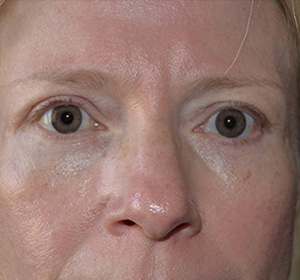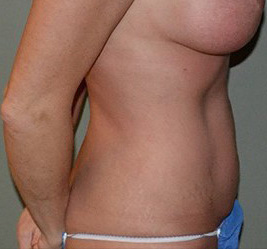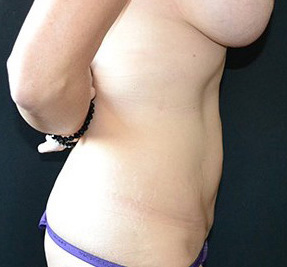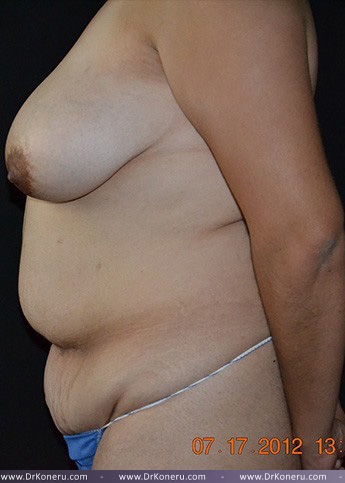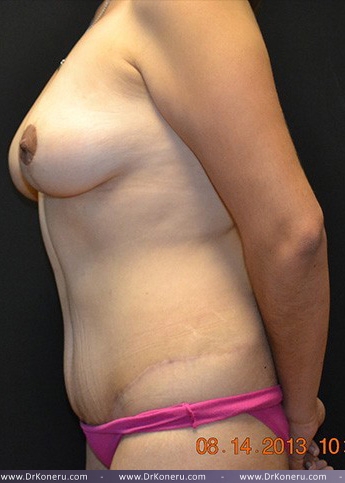Breast Reduction
Conveniently located to serve the areas of San Antonio, TX

A breast reduction is a surgical procedure where excess tissue is removed so that the breasts are smaller, lighter, and a size that is better proportioned to a woman’s body. For some women, large breasts are a real problem. It can be difficult to find relief from back pain, bad posture, or rashes under the breasts. These women may lack confidence in their appearance and feel physically and emotionally weighed down by the size of their breasts, so a breast reduction can be a life-changing procedure.
With over 25 years of experience, Dr. Suresh Koneru provides his patients the opportunity to feel great in their bodies. Dr. Koneru and the staff at Advanced Concepts in Plastic Surgery in San Antonio, TX welcome every patient with quality care and professionalism. Contact our office at (726) 227-6847 or fill out our contact form with your questions and concerns, and we will get back to you as soon as possible.
Contents
Before and After Photos
About Breast Tissue
The female breast contains lobes that can produce milk and ducts that transport it to the nipple. The parts are considered glandular tissue since they are responsible for milk production. There is also fibrous tissue, made up of thicker collagen fibers that protect glandular tissues and keep it in place. Finally, there is fatty tissue that provides the breasts’ shape and size. (1) A breast reduction can get rid of fatty tissue and some glandular tissue in order to reshape and resize the breasts. Some women naturally have larger breasts due to hormone changes, pregnancy, breastfeeding, weight gain, or genetics.
Sometimes, even after a woman’s hormone issue is resolved or she finishes breastfeeding, she still has enlarged breasts that bother her. Other times, a woman can naturally develop very large breasts during puberty that don’t flatter the rest of her body. In these types of cases, Dr. Koneru will eagerly help his patients find a solution.
Procedure Steps for Breast Reduction
A breast reduction procedure can be completed in a few different ways, including but not limited to Dr. Koneru’s preferred SPAIR technique, which involves shorter incisions. Depending on the size and shape of the breasts, some techniques will work better than others. Dr. Koneru will mark the areas of your breasts that will need incisions. You will then receive general anesthesia with PECS blocks I and II, a type of local anesthetic that blocks pectoral nerve pain. He also provides EXPAREL, another medication to block postoperative pain and eliminate the need for narcotic drugs.
Then, fat and glandular tissue are removed while avoiding important blood vessels, nerves, and lymph nodes. The nipple is placed at a higher position as well. Most of the time, the nipples stay attached during the whole procedure so they don’t lose their connection to nerves. (2) With very large breasts, the nipples may have to be removed before reattachment as a skin graft.
Finally, the skin from around the openings is closed with delicate sutures and protected with surgical tape. Dr. Koneru performs a drainless breast reduction. Here are the types of incisions that can be performed on breast reduction patients:
Lollipop Incisions
With this method, Dr. Koneru will make a circular incision around the areola and one that goes straight down to the underside of the breast. After tissue removal, the sutured incisions look like they have a lollipop shape to them.
Anchor Incisions
An anchor incision, also called a wise incision, is like the lollipop, but it’s extended along the underside of the breast so that it looks like an anchor. Many doctors also call this the upside-down “T” suture.
Dr. Koneru’s “Short Scar” Anchor Incisions
Dr. Koneru has a unique way of doing anchor incisions; on most patients, he can use his “short scar” method, also called the SPAIR method. This technique developed by Dr. Dennis Hammond of Michigan, involves shorter incisions on the underside of the breast and can be used to correct moderate or severe sagging. (3)
Liposuction
Liposuction requires no sutures at all. Dr. Koneru will inject tumescent fluid, a substance with lidocaine for numbing and epinephrine to make the fat denser and easier to remove while preventing bleeding. Then, fat is suctioned out from a tiny incision with a thin device called a cannula. This makes liposuction ideal for patients who only want a little bit of reduction.
Recovery
No matter what kind of incisions are used in your breast reduction, you will need at least one week off from work. If your job requires a lot of physical activity, you may need to take two weeks off. Dr. Koneru’s specialized anesthetic will stay in effect for 3 days. Afterward, you may be sore, but this can be treated with prescription or over-the-counter medication that he approves.
Immediately after the procedure, you will need someone to drive you home. Although the bandages can come off after a few days, you will have to wear a molded bra for 4 to 6 weeks. During this time, you’ll be able to take showers without your garment, but you will have to wear it 24/7. Dr. Koneru will tell you to keep your incisions clean, avoid driving for the first 2 to 3 weeks, and keep your upper body upright as much as possible to control swelling. After about 6 weeks, you’ll be able to workout again.
Scars are one aspect that women worry about. The great news is that with proper care, scars can fade significantly with enough time. There are a few effective treatments you can do to speed up the process- scar massage, scar creams, and silicone gel and sheeting are all easy-to-do topical options.
Results
Your swelling will have gone down almost completely by the time you’re 6 to 8 weeks into your recovery. So, you’ll be able to get an idea of what your final results will look like. This is usually when nipple sensation returns, but for some patients, it may take up to six months. (3) Your breasts should feel comfortable, fit proportionally with your body, and make you feel confident, slim, and attractive!
Benefits
For many women with large breasts, breast reduction isn’t just about looks; it’s a medical necessity. Here are some of the benefits of this procedure:
- You’ll be able to wear better fitting tops and more options for swimsuits
- You’ll have better range of motion and less breast bouncing when working out.
- It will be easier to find comfortable and supportive bras.
- You’ll feel relief from pain in your lower and upper back.
- You won’t have to worry about rashes and infections under your breasts.
- It may be partially covered by insurance.
Candidates
If you suffer from bad posture, back pain, shoulder pain, and rashes due to your large breasts, you may be considered for a breast reduction. The ideal candidate is in overall good health, doesn’t plan on breastfeeding in the future, and is a non-smoker. They should also have a BMI under 30; this is because many women who are overweight may easily lose breast volume with healthy weight loss. All fat cells within our body reduce in size with weight loss, so implementing a weight loss plan may be an effective tool for many women. (4) Smokers may qualify, but they should be willing to quit for 3 months before the procedure. Cigarettes and nicotine products can affect your ability to heal well.
Personal Consultation
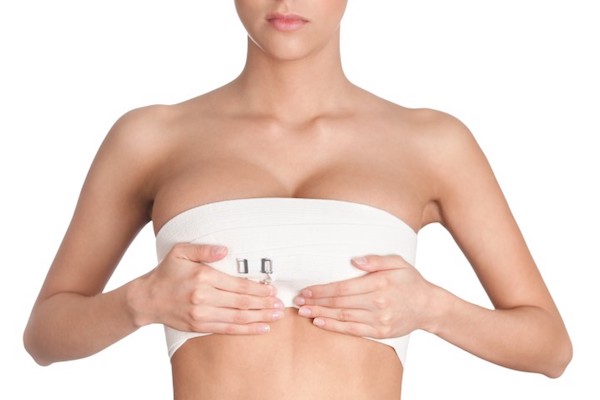
With a personal consultation, you will be able to express the vision you have for your breasts. Dr. Koneru will evaluate your health and listen carefully to your wishes. He will inform you of everything you need to know about preparation, the procedure, and the recovery process. To find out more about his unique approaches to different procedures, read through his blog. If the idea of a breast reduction appeals to you, give Advanced Concepts in Plastic Surgery in San Antonio, TX a call at (726) 227-6847 or fill out our contact form to schedule your consultation today.
Cost of Breast Reduction in San Antonio, TX
In some cases, Health Insurance will cover all or a portion of the costs. Before the initial consultation, we recommend that you contact your insurance provider to ask if breast reduction is a “covered benefit”, and what requirements you must meet. If you have brought your issues to the attention of your primary care doctor, please bring their letters to our office. Also bring any notes from chiropractors, physical therapists, or other physicians who have treated you for back pain. We will be happy to submit letters with your photos in order to help you secure coverage.
FAQ
Is there an ideal age for breast reduction?
Ideally, patients should be at least 18 to receive a breast reduction, but it may be performed for teenagers in some cases.
Does a breast reduction leave scars?
Depending on the incisions, a breast reduction may leave scars, but they will fade significantly within a year. Simple treatments include scar massage, creams, and silicone gel sheets. Their visibility after one year will vary from person to person.
Do breast reductions affect your ability to breastfeed?
A breast reduction may affect your ability to produce milk since some of the glandular tissue is removed. Women that are planning future pregnancies should be aware that the hormonal changes that occur during pregnancy and breastfeeding can increase the size of the breasts and affect the results of their procedure.
References
- Geddes DT, Gridneva Z, Perrella SL, et al. 25 Years of Research in Human Lactation: From Discovery to Translation. Nutrients. 2021;13(9):3071. Published 2021 Aug 31. doi:10.3390/nu13093071
- Schulz S, Zeiderman MR, Gunn JS, et al. Safe Plastic Surgery of the Breast II: Saving Nipple Sensation. Eplasty. 2017;17:e33. Accessed July 19, 2023. https://www.ncbi.nlm.nih.gov/pmc/articles/PMC5700452/
- Hammond DC. The Short Scar Periareolar Inferior Pedicle Reduction (SPAIR) Mammaplasty. Seminars in Plastic Surgery. 2004;18(3):231-243. doi:https://doi.org/10.1055/s-2004-831910
- MacLean PS, Higgins JA, Giles ED, Sherk VD, Jackman MR. The role for adipose tissue in weight regain after weight loss. Obesity Reviews. 2015;16(1):45-54. doi:https://doi.org/10.1111/obr.12255




